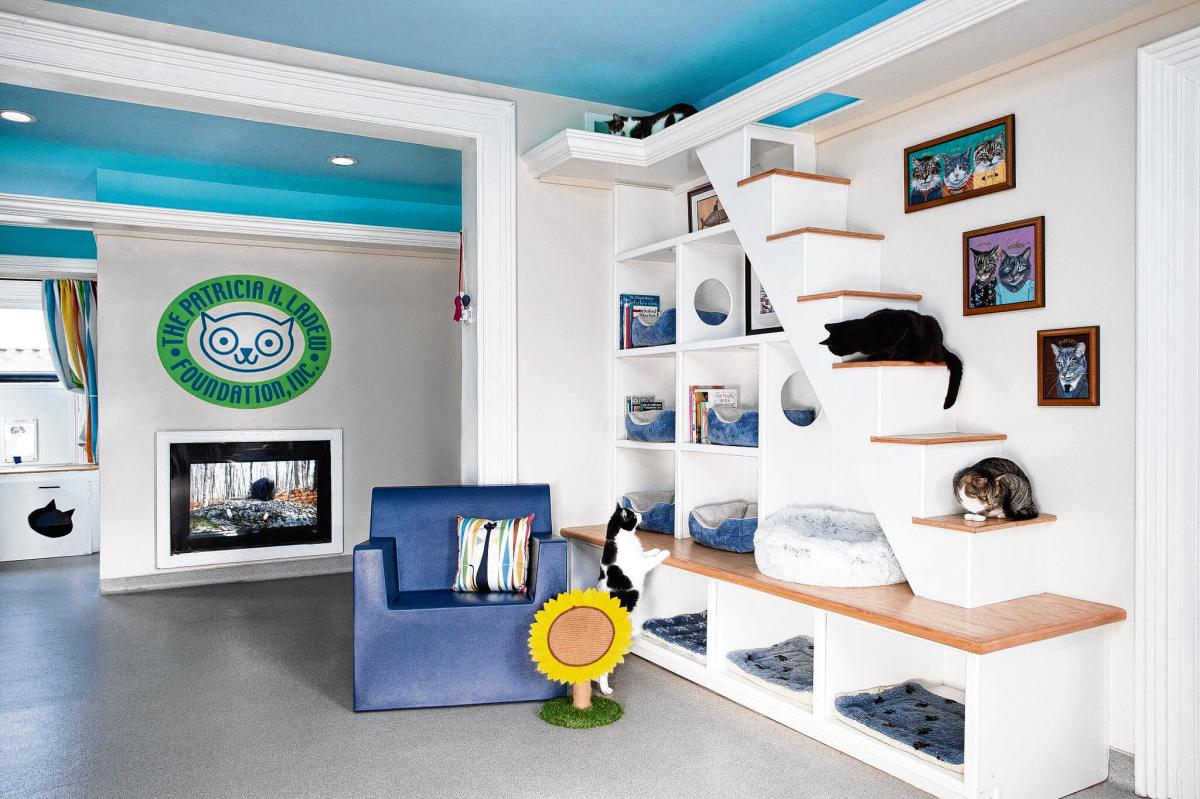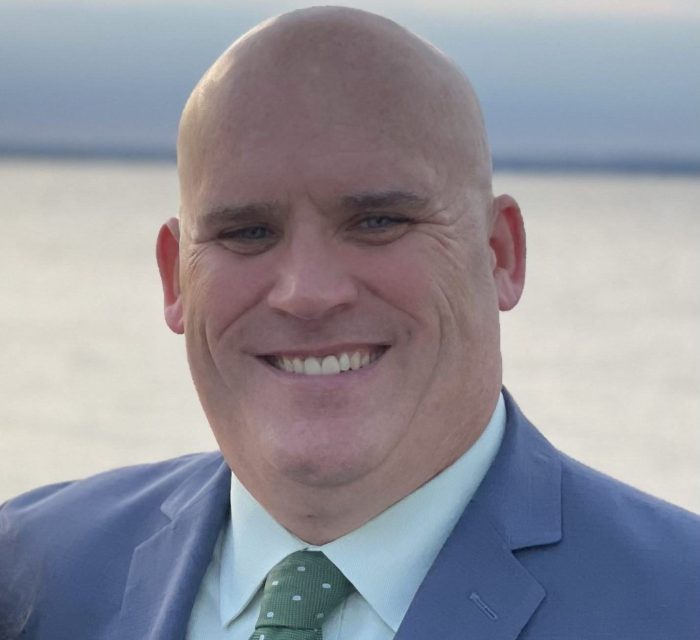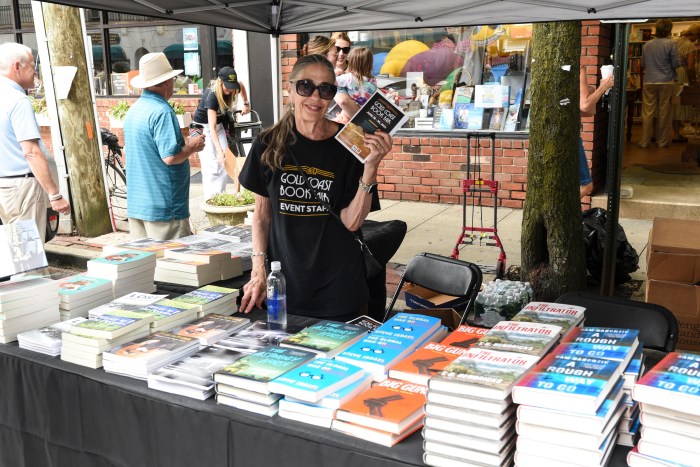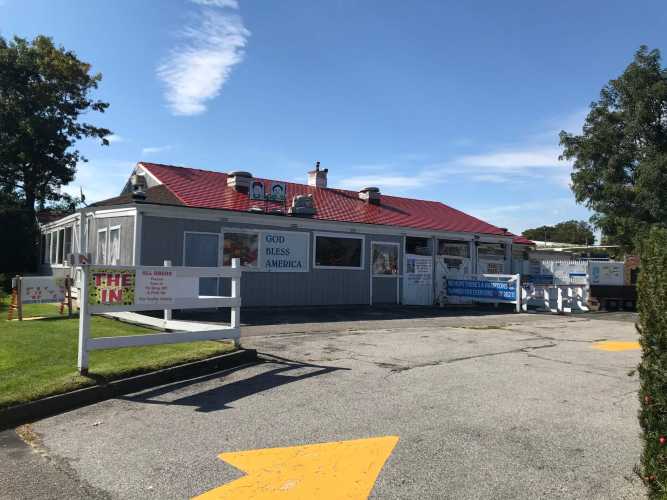By the summer of 1973, in Oyster Bay, Long Island, about a dozen cats had taken over outside a house that had become a dumping ground for unwanted felines. Abandoned by their owners, they mated and gave birth to kittens that struggled to stay alive, while the ones who did survive the elements grew up to become adult cats that wandered around in search of food and warmth — and they kept reproducing.
A local woman, Pat Ladew, heard about the animals. As she recalled, “Somebody called me up and said there were 12 cats sitting around that had been deserted.” So she took matters into her own hands. She brought them into her home, fed them, and provided medical care.
The cats didn’t realize it, but she was a guardian angel who kept them safe and gave them much to be thankful for. Over the years, word of her rescue efforts got around, and people started abandoning cats on her doorstep in nearby Centre Island — so many that she was running out of room: At one point, she was caring for 41 cats. So in 1975, using money she inherited from Standard Oil, she bought a house to serve as a shelter for strays.
Newspapers of the day branded her with headlines like “Heiress Buys Mansion for Cats,” and she was criticized for using her fortune to support animals instead of noted charities. Her response? “Money is freedom to worry about the things that matter.”
Those who labeled her “an eccentric cat lady” got it wrong, for she was ahead of her time. She loved animals, and until her death in 2002 at age 73, she chose to spend her money on the things that mattered, making lifesaving choices for creatures who could not choose.
NOT INTO WHITE GLOVES
Born in 1928, she grew up in a Madison Avenue house in Manhattan and spent time on Long Island. But Patricia Happie Ladew’s childhood was not happy: She wasn’t fond of her mother, and her father died when she was young.
Years later, 1970s television talk-show host Tom Snyder described her as a pampered child, “a well-taken-care-of little girl whose mommy and daddy had all the money” she could want. But she rejected the trappings of high society, as she told Snyder: “I’m not into white gloves…the coming-out thing… you get a nice little job and get married and have a station wagon and a baby, that’s not my idea of where it’s at.” She was an outspoken free thinker, unflinchingly honest when discussing her life: “After four divorces, I’ve given up on other names.”
In addition to caring for cats, Ladew was a talented painter and sculptor. Her artwork was sold at auction, realizing prices of $750. She also penned a criticism column, “The Jaundiced Eye,” for the Oyster Bay Guardian.
Some reporters who covered her purchase of the feline haven wrote that it was a $500,000 mansion. In reality, she told Snyder, the 1800s-era “mansion” was “actually a small, rather tacky house on the railroad tracks,” priced at $40,000. She used her inheritance to buy it, calling it the “Oyster Bay Cat House.”
In 1982, the Albuquerque Tribune reported that her feline orphanage was costing her “a yearly tab of $70,000 including at least $10,000 in vet bills. The felines go through 1,700 pounds of kitty litter every other week.”
Asked why she would spend $70,000 a year on stray cat care, she told Snyder,
“I have a terrible distrust of establishment giving.” Although some have speculated that she loved animals more than people, those who knew her well disagree. Veterinarian Susan Whittred, executive director of the organization and Ladew’s friend, told the Press, “She was a smart, funny, liberal person who just wanted to help animals. She liked people, too — had a lot of friends, and wasn’t a little old lady who had a hoarding house.”
Ladew’s close friend Michael Salmons echoes Whittred’s assessment, calling Ladew “intelligent, witty, a power force with incredible energy.” He said, “She had this fondness of heart for animals because of their helplessness.”

PAWS-ING TO REFLECT ON PAT LADEW’S LEGACY
Upon Ladew’s death in 2002, the nonprofit Patricia H. Ladew Foundation Inc. was established with the mission of finding a home for every cat. Today, the renovated homelike shelter provides hope, love, medical care including sterilization of ferals and strays, and housing. At any given time, it houses about 100 cats, who are mostly cage-free (cats with contagious medical conditions are temporarily caged). Custom sustainable cat trees, a 150-foot indoor run, and posh beds welcome homeless cats that are rescued from municipal shelters, as the sanctuary is a closed-admission shelter. It is staffed by live-in caretakers and an on-site veterinarian.
Allowing cats to roam indoors in a safe environment was the forward-thinking philosophy that motivated Ladew, as recounted in an anecdote by Whittred.
“She had a heart of gold. One day she was driving through the Lincoln Tunnel and she saw a homeless person with a cat. She asked him if she could give him money for his cat. The man, named ‘Donald,’ said yes. She gave him money and took the cat to her home. She named him ‘Donald’ and he was with her even when she died.”
Learn more about the Patricia H. Ladew Foundation at theladewcatsanctuary.org.
For other stories exploring Long Island history, visit this link.


































